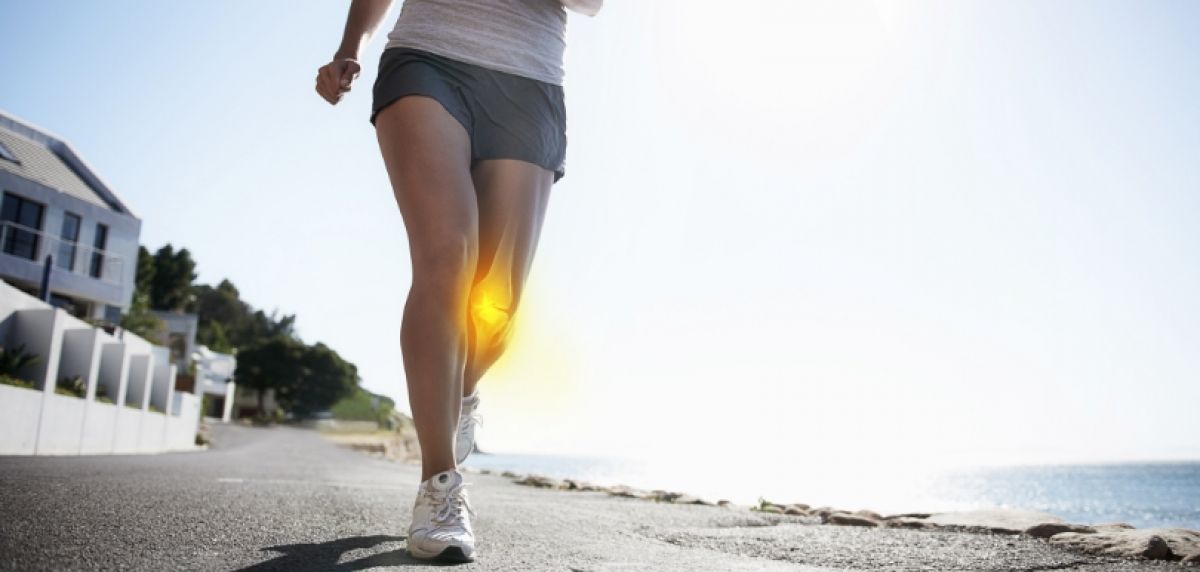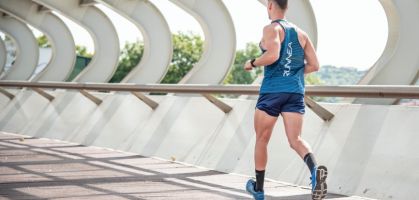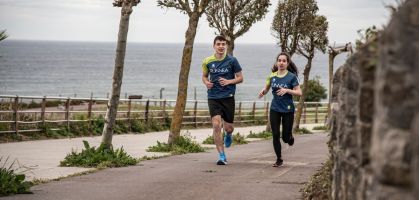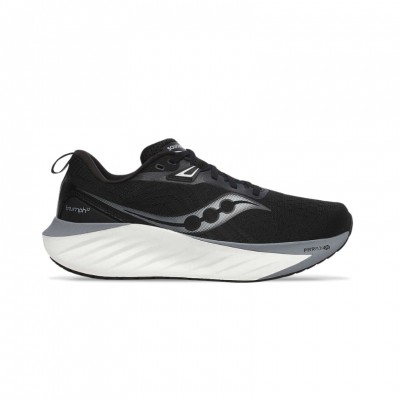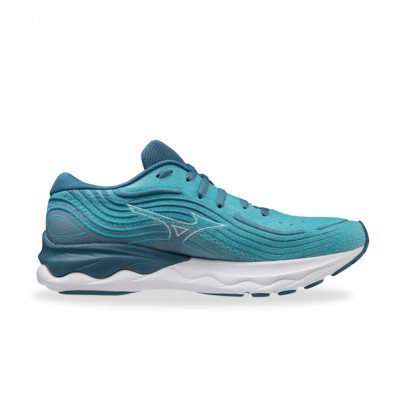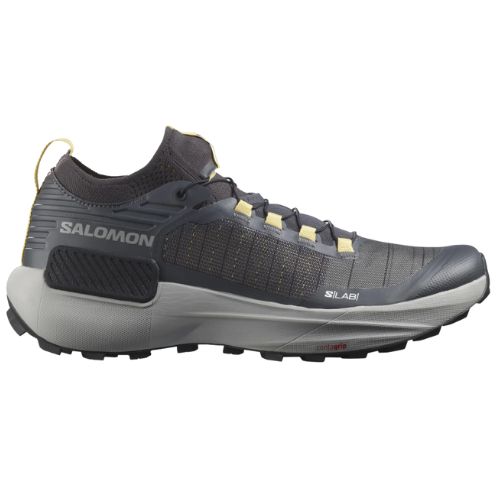There are several sports injuries affecting the knee joint that come into consultation. The knee is perhaps the joint that is subjected to more stress during the race ahead of the ankle or hip, and therefore, of the most sensitive to injury due to its load-bearing function.
In addition to supporting our body weight, the knee is responsible for giving us mobility when we run, walk or jump. Therefore, the knee has to be both a stable and mobile structure. Although it is designed to withstand impact during running, this joint is more vulnerable to serious injury from trauma during sporting activities.
The structures that compose it are affected due to overtraining, poor biomechanics during the running gesture or lack of strength of the muscles that surround it.
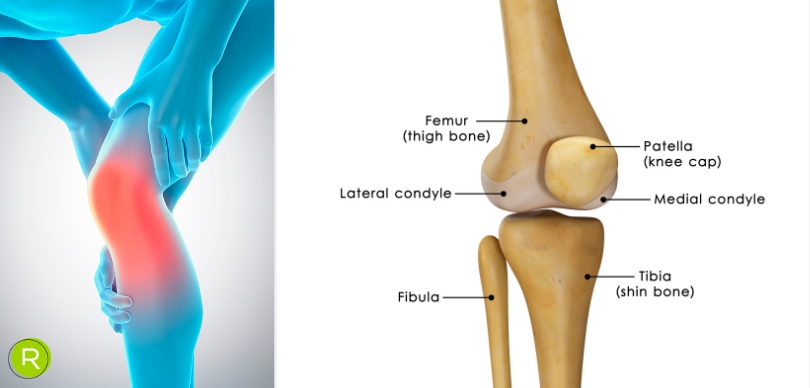
The most common knee injuries in popular runners
The knee is the largest joint in the body formed by two important bones: the femur and the tibia, and another smaller one with a triangular shape called patella. These bones articulate with each other favoring the flexion-extension movement.
This movement is given by the contraction of two large muscle groups, on the one hand and in general, by the quadriceps muscle that performs the extension movement, and on the other hand, by the hamstring muscles, which performs the flexion movement. In addition to bones, muscles and tendons, in the knee there are ligaments that give it stability, and other structures such as cartilage or menisci that prevent the bones from rubbing against each other and wear out.
Let's review 5 of the knee injuries that are, in my opinion, the most frequent in runners:
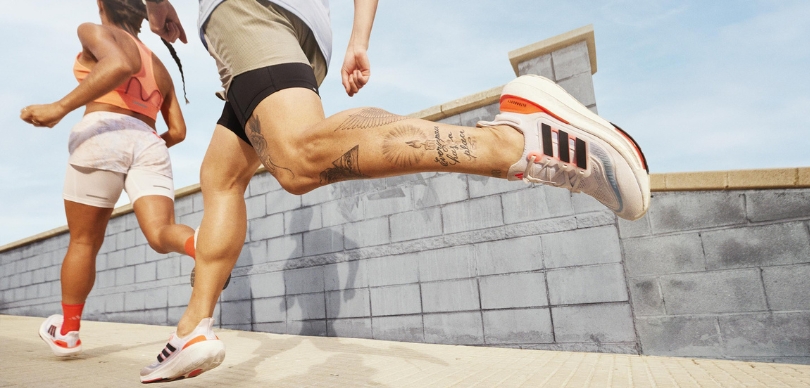
Iliotibial band syndrome or runner's knee.
If you are a runner you have surely heard of this injury so common in athletes who practice running. This injury is the most common cause of lateral knee pain, especially in sports that require a repetitive movement of knee flexion and extension as in cyclists or long distance runners.
The appearance of this injury is mainly related to an excessive tension of the iliotibial band, which is the extension of connective tissue formed by fibers of the tensor fascia lata and gluteus medius. When this band or cintilla exercises an excess of tension, in its insertion it appears inflammation and pain located in the external femoral condyle, being typical to find it to the pressure in this zone, producing in some cases incapacity to make the sport practice by the so intense pain that produces.
This inflammation can appear by excess of friction of the iliotibial band by its passage by the external part of the knee during the race.
There is a high frequency of appearance in runners due to different factors:
- Tight iliotibial band.
- Continuous micro-traumas that are absorbed by the knee, and specifically by its external side.
- Weakness of the abductor muscles, specifically the gluteus medius. For this reason it is important to work on muscle training in addition to running.
- Incorrect stride. The excess of pronation of the foot implies an internal rotation of the tibia, and therefore, an excess of tension in the insertion of the cintilla.
- Anatomical variants that contribute to increased tension in the iliotibial band such as lower limb dysmetries, increased knee varus or valgus or excessive foot pronation.
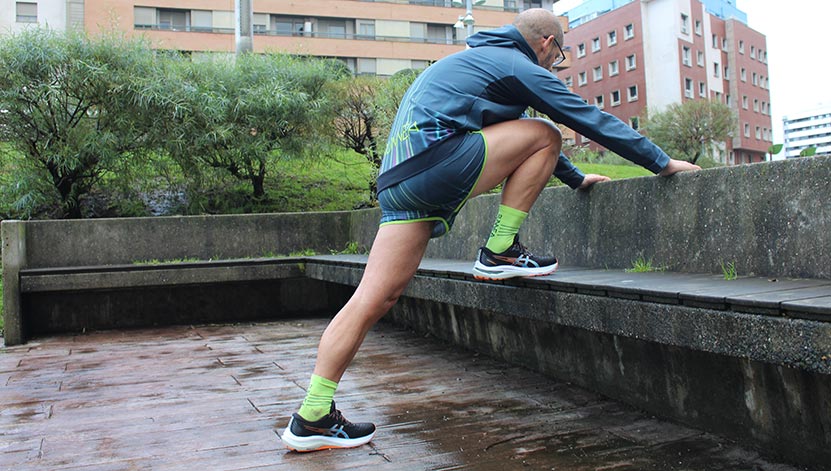
Patellar Tendonitis
Patellar tendinitis, or "jumper's knee", is an inflammatory process that affects the tendon that connects the patella to the tibia. It is one of the tendinopathies with the highest incidence along with that of the rotator cuff tendon or the Achilles tendon.
The patellar tendon is a wide band of fibrous tissue that makes of union between the quadriceps muscle and the anterior tuberosity of the tibia. The main function of this tendon is to perform knee extension when the quadriceps muscle contracts. This tendon structure also has to support isometric and eccentric loads during the race and his injury is closely related to activities that demand a great demand of the knee extensor system, mainly in sports that are related to the jump or the race where the patellar tendon stores and releases energy of repetitive form.
Normally this injury appears unilaterally but can occur, more eventually, in both knees. Clinically it presents as pain in the anterior aspect of the knee, located at the inferior pole of the patella, which increases with workload and usually subsides at rest.
In the different stages of the injury, we can find phases in which the pain only appears during sports activity and does not affect performance, phases in which the pain disappears slightly during activity and returns intensely at rest, and phases in which the pain is constant and notably decreases sports performance. Early treatment of this injury is carried out with the intention of interrupting the inflammatory process in its initial stages. Analyzing and avoiding the cause of this inflammation in order to reduce the training load temporarily may be sufficient to reverse the process.
The predisposing factors that cause this injury to appear are:
- Overuse, overtraining and fatigue.
- Muscular decompensations between the flexor and extensor musculature of the knee.
- Continuous impacts due to eccentric contraction of the quadriceps to cushion the fall during running.
- A morphologically high patella.
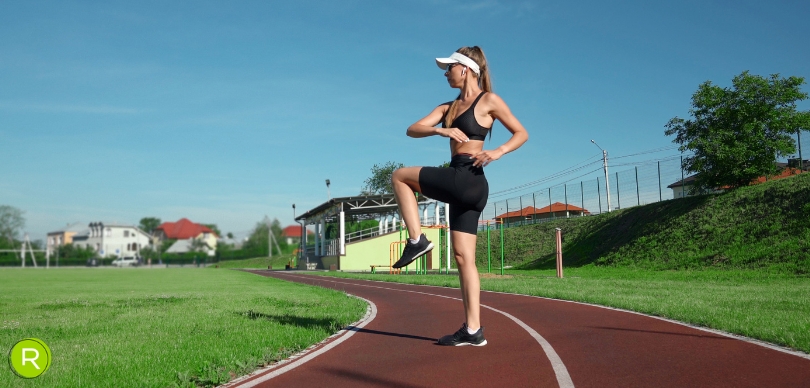
Chondromalacia patellae
Chondromalacia patella is possibly the most common knee injury that is not necessarily related to sports activity. Arguably, all humans have some degree of chondromalacia in the knees, but, on many occasions, this injury is asymptomatic.
Chondromalacia patellae or patellofemoral syndrome, is a wear of the cartilage that is located between the patella and the femur whose function is to favor the sliding between these two structures.
When there is a bad alignment of the patella with respect to the femoral groove during the flexo-extension movement, an excess of friction is produced in this joint. This misalignment is normally produced by a lateral displacement of the patella, for that reason it is necessary to strengthen the vastus medialis of the quadriceps to try to center the patella and to avoid, in part, this excess of friction.
The symptoms of this injury are:
- Dull, non-specific pain that is usually located around the patella.
- Sensation of pressure on the back of the patella.
- Creaking below the patella when flexing and extending the knee.
- Functional disability resulting in weakness, especially when going up and down stairs.
In addition to physical therapy to try to reduce the symptoms produced by this injury in mild stages, there are treatments to alleviate its symptoms:
- Oral chondroprotectors. The scientific evidence on the efficacy of these drugs is not clear, but it is a pharmacological complement to physiotherapy treatments.
- Infiltrations of hyaluronic acid. We cannot say that today there is a cure for osteoarthritis, but these compounds that are infiltrated into joints with mild or moderate cartilage wear, reduce pain and promote sliding between structures, also delaying the evolution of the injury itself.
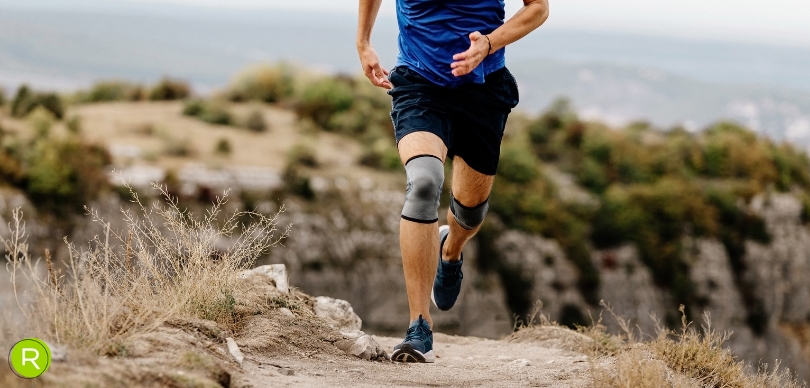
Tendinitis of goose foot
This pathology with this peculiar name is another tendon inflammation typical of runners, occurring mainly in long distance runners.
It receives the name of "Goose Foot" because the insertion in the knee of three muscles that run along the leg form a tendon bundle that simulates the leg of a duck or in this case of a goose. When we speak of goose foot tendinitis, or anserine tendinitis, we refer to the inflammation or irritation of this tendon group at the insertion of 3 muscles and their bursa.
The muscles that form this tendinous structure are:
- Semitendinosus, which together with the biceps femoris and semitendinosus form the hamstring group, responsible for flexing the knee.
- Sartorius. It is the longest muscle in the body and crosses the thigh diagonally from the iliac spine, above the hip, to the inside of the knee precisely at the goose leg. Being a biarticular muscle, it will perform specific movements of both the hip and the knee, being these movements flexion, external rotation and hip adduction, and knee flexion.
- The gracilis or internal rectus is located vertically and superficially in the medial part of the thigh. It is located as a muscular cord that descends from the pubis to its insertion in the goose foot. Its main action is hip adduction and knee flexion.
Knowing the anatomy and biomechanics of this muscle group will help us to know how to stretch them if pain appears. Its symptoms:
- Pain in the anterior and medial aspect of the knee when running that can also appear at rest. It is the main symptom of this pathology.
- Pain when pressing the insertion zone of this structure.
- Morning stiffness that disappears after a few minutes.
- Pain in efforts like levantare of a chair.
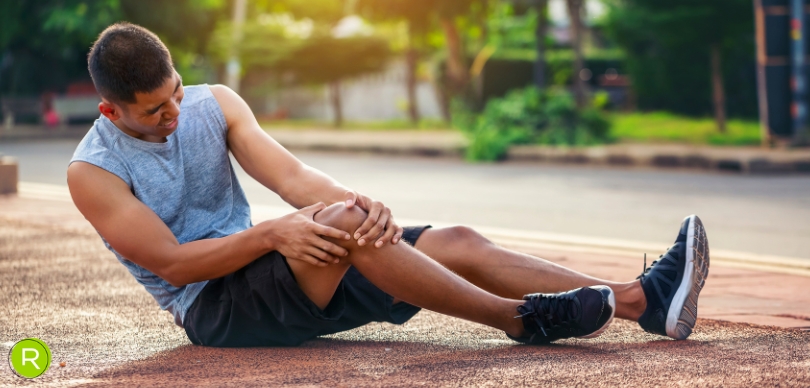
Meniscal lesions
The menisci are an important part of the cushioning system of the knee. They are two fibrocartilaginous structures of soft, fibrous tissue that act as a cushion between the tibia and femur. This cushioning function reduces the risk of knee injuries by absorbing and distributing the impacts during the running gesture and thus decreasing the wear and tear of the cartilage.
It is true that the occurrence of these injuries cannot be directly attributed to running, but their incidence is clearly related to the mechanical function performed by the knee during this sporting gesture.
There are two distinct groups within meniscal injuries in runners; traumatic on the one hand, where there will be a clear injury mechanism, with a higher incidence in young runners, and on the other hand, degenerative, with a less evident onset of injury and directly related to a degenerative process of the knee joint, occurring in the older population.
The presence of a meniscal lesion directly affects the runner's performance.
Mechanical pain in the joint interlinear is a clear symptom of this pathology, inflammation, post-exertional effusion or even joint blockages can accompany the pain in these lesions. In this situation, the manual exploration and the clinical characteristics of this lesion will highlight the pathology. Magnetic resonance imaging is the complementary study to establish a diagnosis with certainty.
The treatment for these injuries will depend on the type of injury, its size and the context of the patient himself, such as his age, the activity he performs, etc. It will be necessary to analyze the recovery needs and characteristics of each athlete, differentiating the injuries that do not require surgical intervention from those that must undergo another type of intervention. The main objective of these treatments is to restore the functionality of the knee and respect the maximum of healthy tissue in order not to accelerate joint wear.
There are different treatments to solve a meniscal injury:
- Conservative, non-surgical treatment. Indicated in older athletes, with a context of a degenerative knee in which meniscectomy and partial or total removal of the meniscus, could accelerate premature wear of the joint. With conservative treatment, recovery times are extended, based on sports rest, anti-inflammatory measures and physiotherapy to reduce pain and edema. Progressive loads with active knee exercises to recover strength and a sports readaptation to running will be necessary to avoid relapses and to re-evaluate the injury once the acute-inflammatory phase has passed.
- Surgical treatment, indicated in athletes who need to return to their sporting life as soon as possible. It is a procedure with few complications in which the damaged area is removed by arthroscopic techniques that facilitates the possibility of starting rehabilitation treatment as soon as possible.
- Meniscal sutures. It is not always possible to perform it but when the tissue is of good quality and the tear allows it, it is the most appropriate technique to maintain the integrity of the meniscus and to delay the articular wear of the knee.
Not all meniscal injuries are the same, so recovery time will vary from case to case. If there are no other associated injuries, the recovery time until you can perform a demanding sporting activity, may vary from 4 to 6 months.
It is necessary, on the part of the athlete, to know how to recognize the symptoms of each injury to be able to differentiate them, but whenever the pain is manifested it is important to put yourself in the hands of professionals to shorten recovery times and prevent the injury from becoming chronic. Modifying our training program, substituting training temporarily for another complementary activity and seeing a physiotherapist becomes necessary to recover from these injuries.
Read more news about: Running Training
